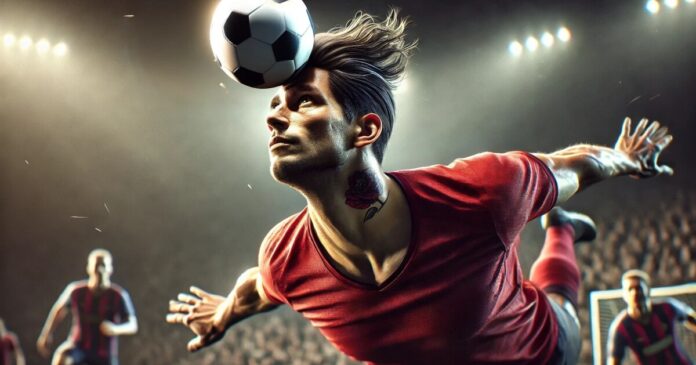Researchers from the Radiological Society of North America (RSNA) studied the brain MRIs of 352 amateur soccer players, aged 18 to 53, both men and women. They found abnormalities in the white matter surrounding the brain, particularly in the frontal lobe, similar to CTE.
CTE is a progressive brain disease often seen in contact sports like boxing, MMA, or football, where athletes face repeated head trauma. Early signs of CTE include memory problems, mood changes, emotional instability, and behavioral issues like impulsivity or aggression. CTE has also been associated with depression and violence. As the disease progresses, symptoms worsen to include dementia, speech and vision problems, and Parkinson’s-like symptoms affecting muscle control.
While soccer doesn’t typically involve hard knocks to the head, “headers” are common. The frontal lobe is crucial for cognitive functions and memory, which soccer players frequently engage when making header shots or passes.
The 352 brain MRIs were compared to 77 non-collision athletes, such as runners, using diffusion MRI, a technique that focuses on water molecule movement to detect subtle abnormalities like stroke, neurodegenerative diseases, or traumatic brain injuries (TBI). Most players in the study had not been diagnosed with TBI or concussion, highlighting the cumulative impact of sub-concussive impacts like headers.
Players who frequently headed the ball showed white matter abnormalities near the sulci, grooves in the brain’s outer layer essential for optimizing brain efficiency and separating functional brain regions. White matter acts as a communication highway for the central nervous system, transmitting signals within the brain and spinal cord.
“Our analysis revealed that white matter abnormalities play a role in the cognitive performance decline associated with heading,” said Dr. Michael L. Lipton, a radiology professor at Columbia University. The study indicated a direct link between repetitive headers and poorer verbal learning performance, suggesting even seemingly minor impacts like headers can significantly affect the brain.
CTE has been predominantly identified in athletes, particularly in boxers and NFL players. Diagnosis of CTE can only be done postmortem, making research challenging.
In 2022, the National Football League mandated the use of Guardian Caps during preseason practice to reduce head injuries. Studies have shown these caps to decrease collision impact by 10-20% if both players wear them.
While the appearance of Guardian Caps on players may be unusual, prioritizing brain health is crucial. Cases like those of Jeff Astle, Scott Vermillion, Derek Boogaard, and Chris Benoit highlight the serious consequences of CTE.
Source: Science Daily




